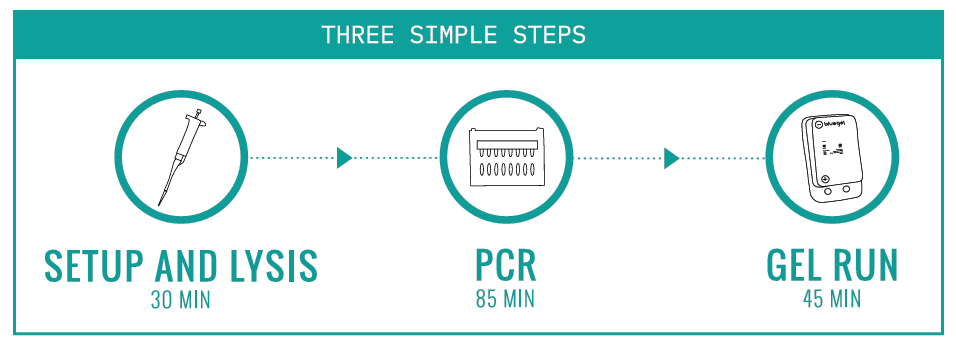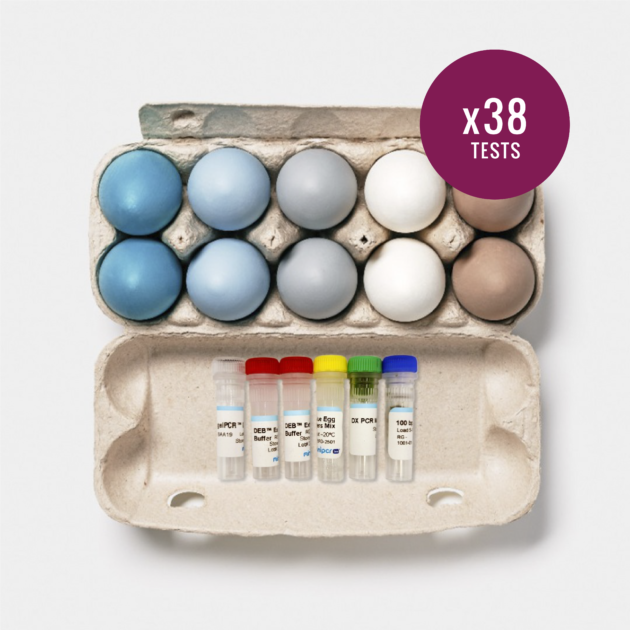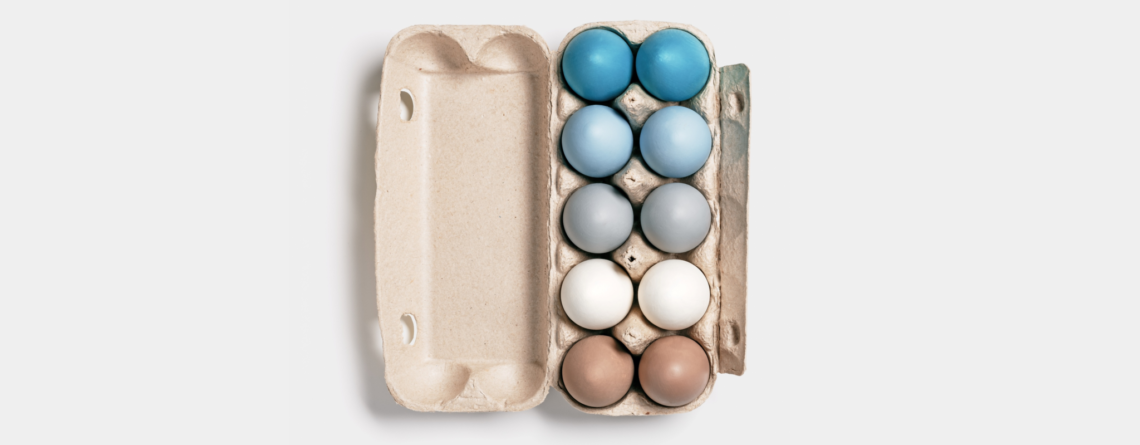A blue egg gene test for my chickens?
A retrovirus is the genetic element that makes chicken eggshells blue – and you can test for it at home!
With egg shortages becoming more common, many people are turning to backyard chickens for a steady, reliable supply. Not only does keeping chickens ensure fresh eggs, but it also allows you to select for unique and valuable traits – like the rare and beautiful blue egg.
The Genetics Behind Blue Eggs
The reason some breeds of chickens lay blue eggs is because of an ancient virus. A long time ago, a retrovirus inserted its genetic material into the chicken genome. Instead of making chickens sick, this DNA insertion affected a gene called SLCO1B3, a transporter protein that moves chemicals in and out of cells. In chickens with this viral insertion, the SLCO1B3 gene product does something that doesn’t happen in brown-egg layers: the transporter moves a pigment called biliverdin inside the eggshell, turning it blue from the inside out.
Once this viral DNA got inserted in the genome of some chickens, it was passed down through generations. Human breeders noticed the resulting trait – beautiful blue eggs. Through human selection, blue-egg-laying breeds like Araucanas and Cream Legbars became special. But even within these breeds not all chickens inherit the viral DNA insertion that we now know as the “Blue Egg Gene”. And that’s where a simple DNA test can help – quickly confirming if a bird will lay blue eggs and helping breeders and backyard chicken keepers select the best hens for their flocks.
How can I select Blue-Egg layers?
Today, thanks to PCR technology, on-farm DNA testing allows you to confirm whether a chicken carries the Blue Egg Gene, ensuring you’re selecting the right birds for your flock. A genetic test from a blood sample can save months of uncertainty, helping you efficiently breed for blue egg production.
This test determines whether a chicken is heterozygous or homozygous for the Blue Egg Gene.

What are the steps in the Blue Egg Gene PCR test?
Our Blue Egg Gene DNA Test is straightforward and can be conducted on-farm by breeders or used as an educational tool by teachers. The kit includes all the necessary reagents, as well as the PCR tubes. It consists of three steps:
- Set up & Lysis: Prepare the reaction Extract the DNA from a previously blood spot blotted on paper with a simple 10 min incubation in DNA Extraction Buffer (provided).
- PCR (Polymerase Chain Reaction): Amplify the DNA using primers that produce products of different sizes depending on whether the mutation is present or not.
- Gel Electrophoresis: Separate the DNA fragments by size on a gel.
- One lower band = two copies of the Blue Egg Gene (homozygous).
- Two bands = One copy of the Blue Egg Gene (heterozygous)
- Upper band = No Blue Egg Gene.

What do I need to perform Blue Egg Gene DNA testing?
How to start
For on-farm DNA testing, you need a kit, gel electrophoresis supplies, plastic consumables, and basic equipment. We’ve bundled everything for easy setup!
- gelPCRTM Starter Bundle: Processes 8 samples (7 tests + 1 negative control).
- gelPCRTM Premium Bundle: Processes 16 samples (15 tests + 1 negative control).
Good news: equipment is a one-time purchase!
Keep testing
For refills, order the kit, gel electrophoresis supplies, and plastic consumables (microtubes and filter tips) online. For convenience, the Learning Lab Companion Kit includes microtubes and gel electrophoresis materials to keep testing seamlessly.
A user-friendly DNA test for the Blue Egg Gene
With backyard chickens on the rise, ensuring the best genetics in your flock is more important than ever. Want to confirm your hens carry the blue egg gene? Our on-farm DNA test gives you clear results—because when it comes to rare and valuable eggs, knowledge is power.











